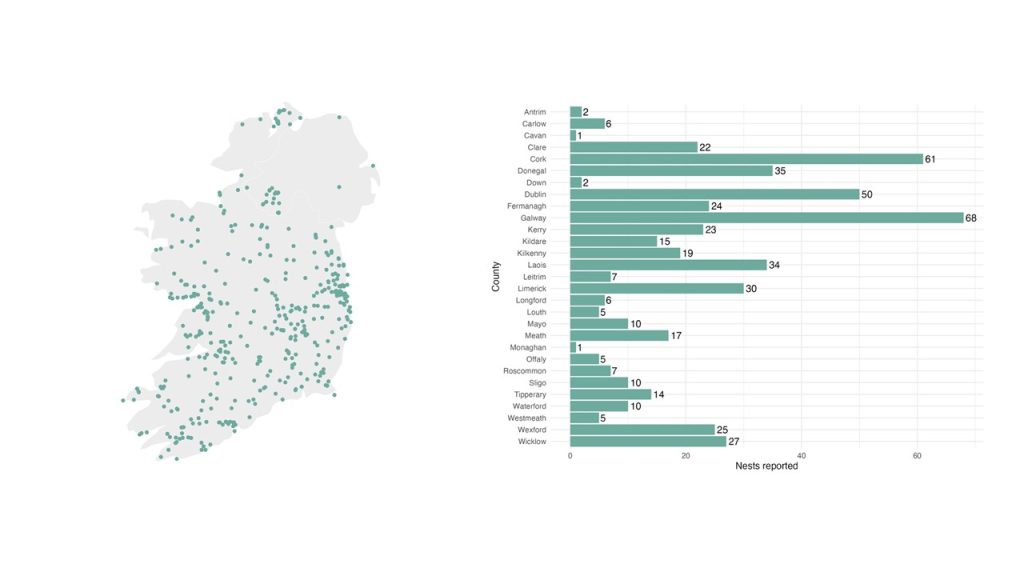Thanks to the generous contribution of many citizen scientists, we were able to gather 541 reports of nests of free-living honey bees around Ireland, the majority of which are located in buildings (e.g., in roof spaces, inside walls etc.) and tree cavities.

Would like to contribute to this research and share information about a honey bee colony living outside of managed hives in Ireland? Follow the instructions below and see how you can help. If instead the free-living colony you know lives in Northern Ireland or the UK, follow this link.



